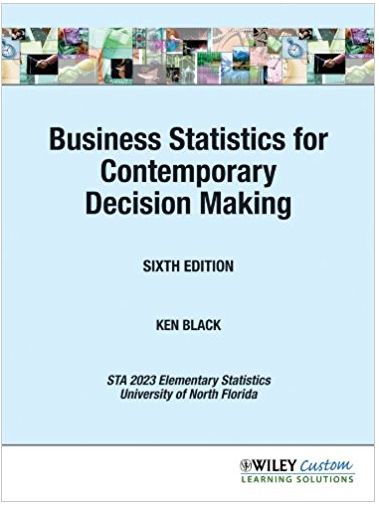Question
1. Goods will be oversupplied by the market process when there are Select one: a. surpluses. b. negative externalities. c. inverse externalities. d. positive externalities.
1. Goods will be oversupplied by the market process when there are
Select one:
a. surpluses.
b. negative externalities.
c. inverse externalities.
d. positive externalities.
e. shortages.
2.In the case of a positive externality, market price is ____, output is ____, and the government should impose a ____ to rectify the situation.
Select one:
a. too low; too high; tax
b. too high; too low; subsidy
c. too high; too high; tax
d. too low; too low; subsidy
e. too low; too high; social cost
3.According to the Coase theorem, the market process leads to a socially efficient allocation of resources if
Select one:
a. all property is common property.
b. there are no private costs.
c. there are no private benefits.
d. property rights are well defined.
e. government withdraws from the market.
4.One of the limitations of the Coase theorem is that it
Select one:
a. works best when there are a large number of firms and producers.
b. assumes large transaction costs.
c. holds only when property rights are held in common.
d. breaks down when transactions costs are higher.
e. requires government to be perfectly informed.
5.If production of a good is causing pollution so that social marginal cost is greater than private marginal cost, the appropriate tax policy is to levy a tax
Select one:
a. equal to the cost of pollution abatement equipment.
b. equal to social marginal cost.
c. equal to the difference between social and private marginal costs.
d. equal to private marginal cost.
e. sufficiently high that production of the good falls to zero.
6.In making their consumption decisions, individuals consider
Select one:
a. private costs and social benefits.
b. social benefits and private costs.
c. private costs and private benefits.
d. social benefits and social costs.
e. positive and negative externalities.
7.Which of the following does not generate an externality?
Select one:
a. a consumer eating a chocolate bar
b. a firm emitting pollutants into the air
c. a householder shoveling snow from the sidewalk outside her house
d. a person smoking a cigarette in a confined space
e. a beekeeper whose bees pollinate a neighbor's fruit trees
8.When a negative externality occurs in the production of a good,
Select one:
a. social marginal cost is less than private marginal cost.
b. private marginal cost exceeds social marginal cost.
c. the good or service is undersupplied.
d. social marginal cost exceeds private marginal cost.
e. too few resources are allocated to the production of the good.
9.When a positive externality occurs in the consumption of a good,
Select one:
a. too many resources are allocated to the production of the good.
b. social marginal benefit exceeds private marginal benefit.
c. the good is overproduced.
d. social marginal benefit is less than private marginal benefit.
e. private marginal benefit equals social marginal benefit.
10.If the social marginal cost of a good exceeds the private marginal cost,
Select one:
a. the price is above the socially efficient price.
b. society should reduce production of the good.
c. society should leave production of the good unchanged.
d. society should increase production of the good.
e. the privately efficient outcome is also socially efficient.
Step by Step Solution
There are 3 Steps involved in it
Step: 1

Get Instant Access to Expert-Tailored Solutions
See step-by-step solutions with expert insights and AI powered tools for academic success
Step: 2

Step: 3

Ace Your Homework with AI
Get the answers you need in no time with our AI-driven, step-by-step assistance
Get Started


